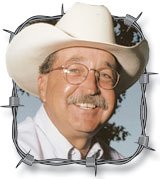I recently received a phone call from an old friend. She said she needed a few questions answered for a project and thought I could help her.
She primarily asked about the region’s decline in dairy farms and the types of crops grown, now and in the past. I thought it was an excellent opportunity to share some information with my friend, who does not have an agriculture background.
I may have overshared, but I wanted her to understand farming and ranching in the Ozarks. The call piqued my curiosity, and I began to look at 100-plus-year-old figures regarding production.
I looked at my home county’s records from the Missouri Agriculture Report from 1872 and was neat to find out there were more than 12,000 head of sheep and 20,000 hogs. The farmers grew Indian corn, wheat, oats, and some cotton and tobacco. Cattle were mostly free-rage, and there were reports of “improved livestock” being produced. There were also three flour mills and five or six water mills.
Goods were hauled by wagon more than 30 miles away to the nearest railroad. I drive the road that was likely used for the trip back then. It takes me about 15 minutes to get 15 miles or so to the office. I estimate that a horse-drawn freight wagon could make about 4 miles an hour, so it wasn’t a quick trip.
I found mountains of hand-written records from the 1880s detailing crops grown by individual farmers, wages paid to hired hands, and so forth; it was all fascinating.
In the old days, raising livestock and crops was a matter of survival. If you didn’t grow or raise it, you didn’t eat it. You could likely find what you didn’t have at your place at a neighbor’s, and you could buy or trade for what you needed. Grocery stores in those days were supplied by local farmers, too. Remember how Mrs. Olsen would buy eggs from Mrs. Ingalls?
There’s a small community only about a mile and a half from the house. In its heyday, it had a bank (which still stands and was the smallest bank in Missouri), a hotel, a barber shop, a blacksmith shop and a dry goods store, which was the super center for the folks in the community.
General stores that once dotted the rural landscape are gone, replaced by the shells of crumbling buildings serving as reminders of the almost forgotten past of the Ozarks.
Our farmers and ranchers, however, are still working to feed their communities; they just do it a little differently and feed a lot more people.
The Industrial Revolution and mechanization of agriculture changed farming in the United States. We began to lose our diversified farms, farms that raised a little bit of everything. We started seeing more and more specialized farms, farms that grew or raised one or two things, not 15. Farmers no longer had to raise and grow it all to survive.
Another revolution has been brewing in agriculture in the last several years.
More and more producers are catering to those who crave locally-sourced food products. More consumers want to know exactly how their food is grown and raised and wish to have a relationship with the farmers and ranchers producing those goods. It’s opening new markets and new resources for both producers and consumers.
There’s room at the table for everyone in the agriculture industry: small farmers, big farmers, livestock producers, grain croppers, fiber and forage farmers, traditional and non-traditional and everyone in between.







